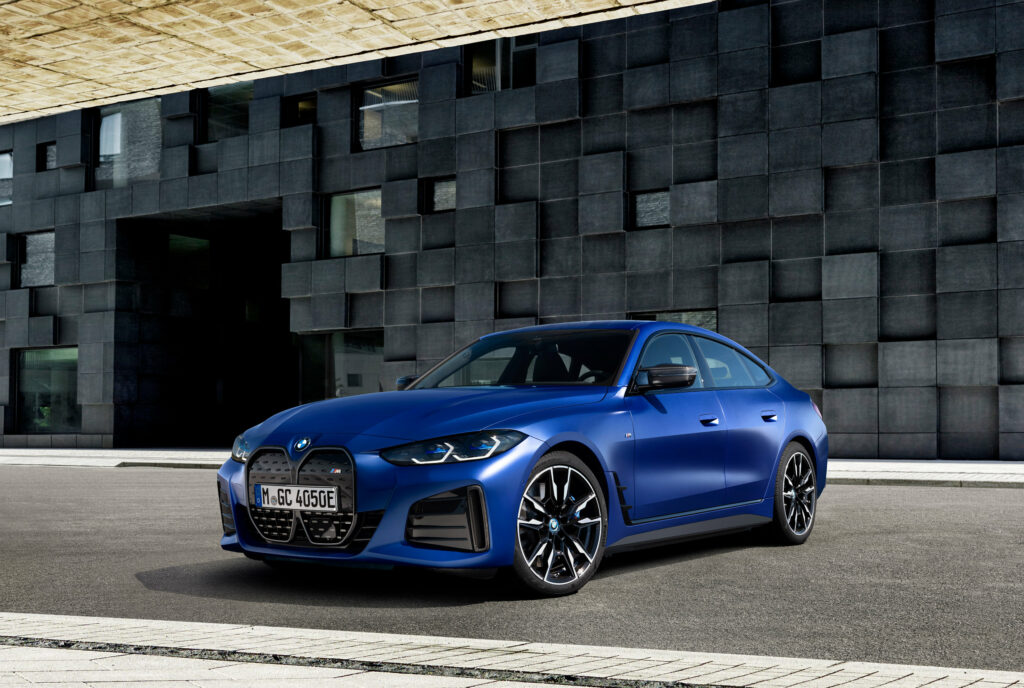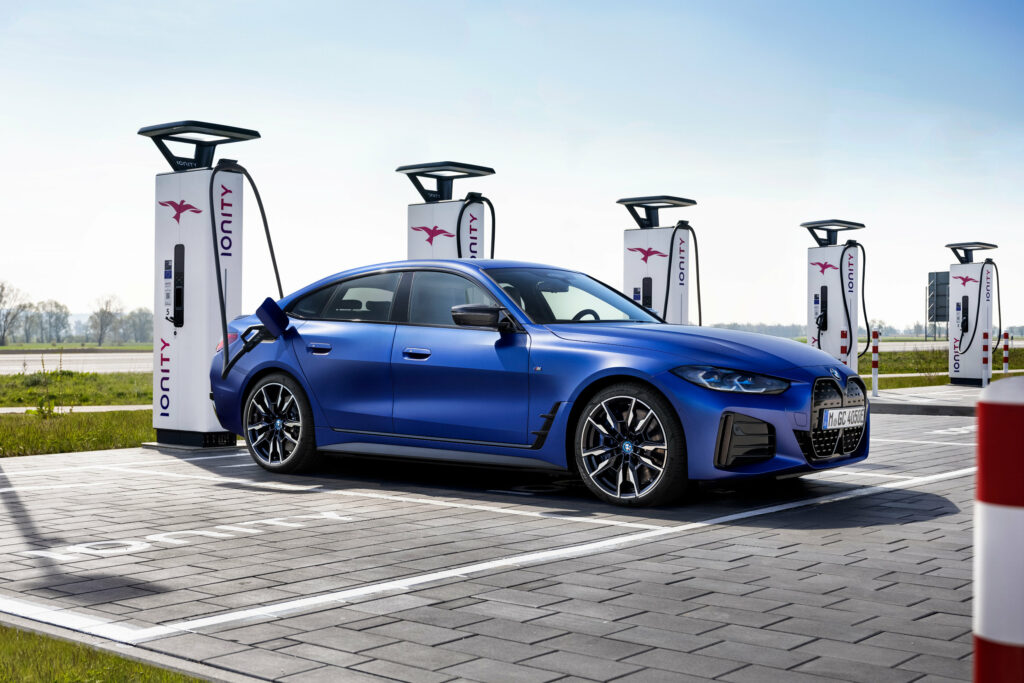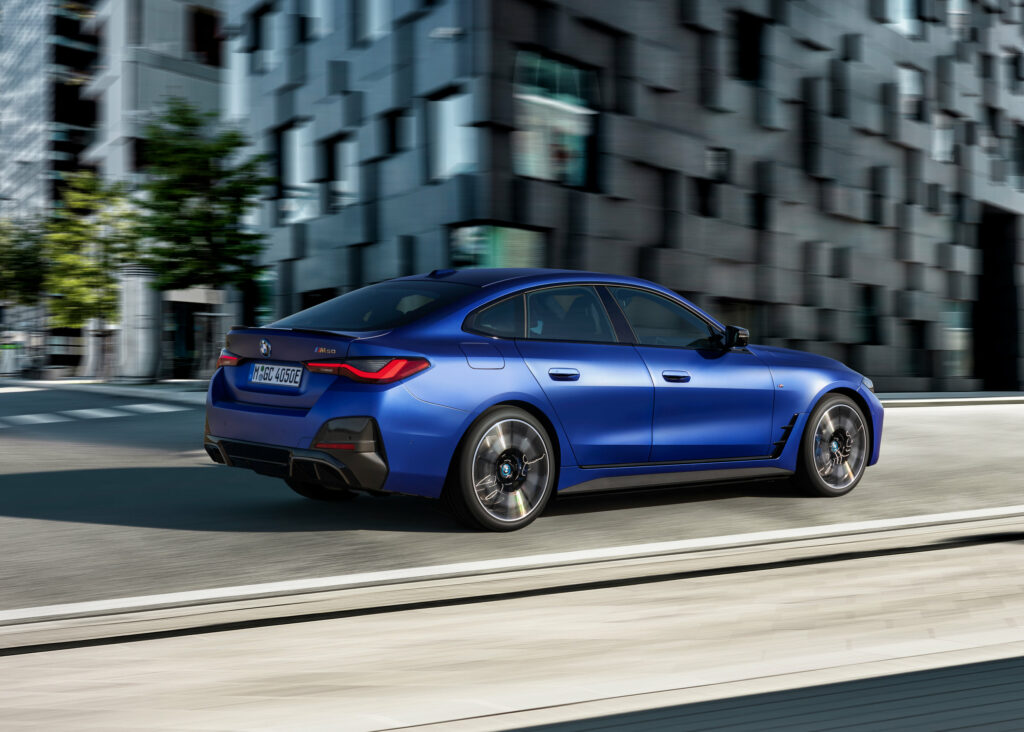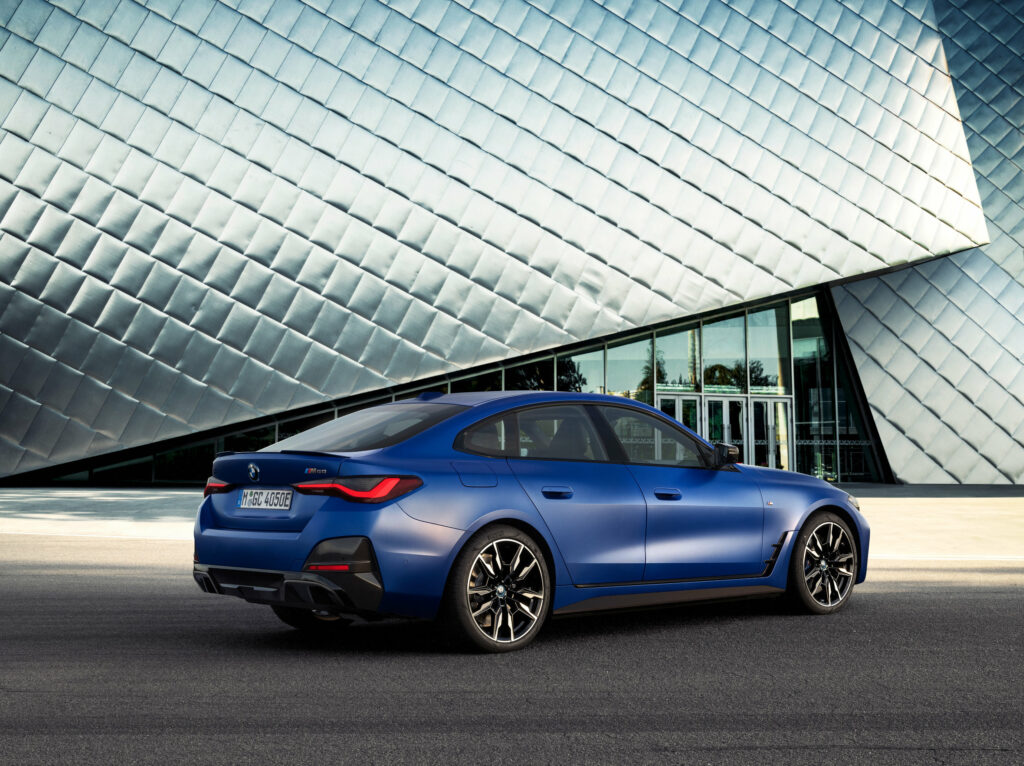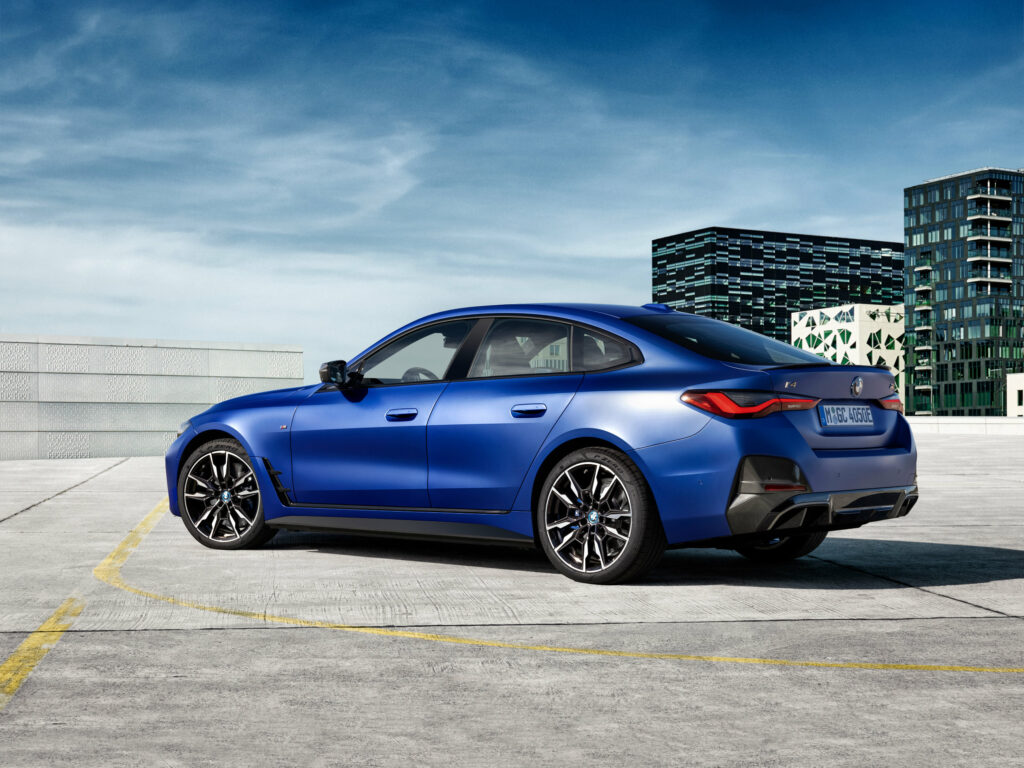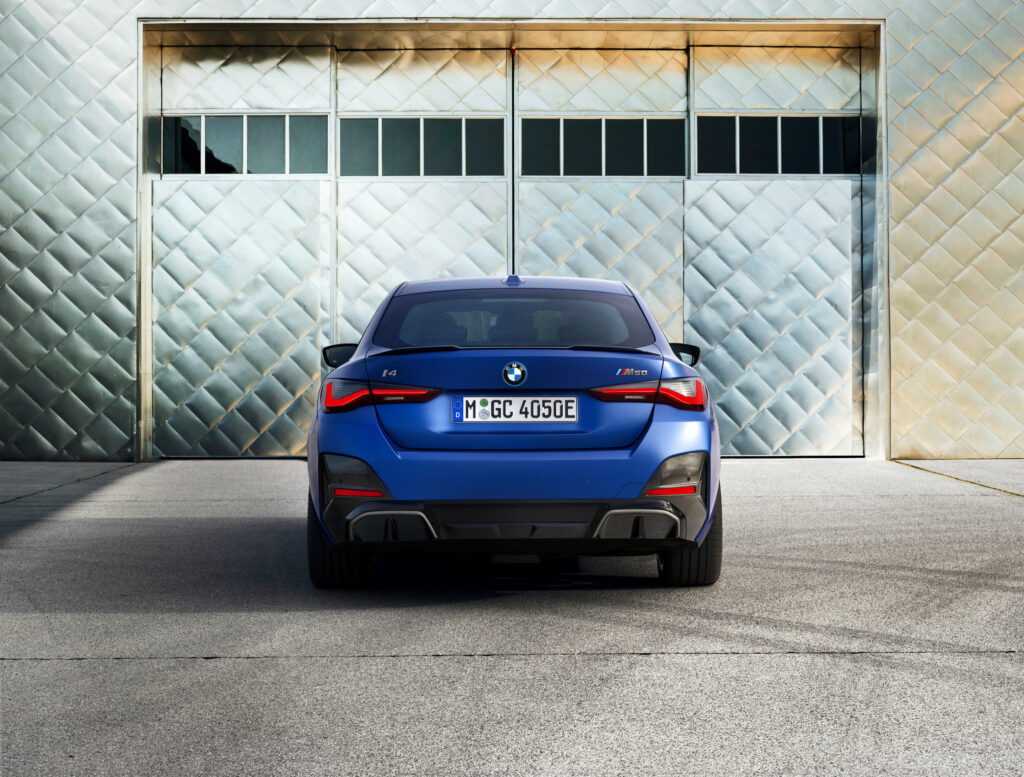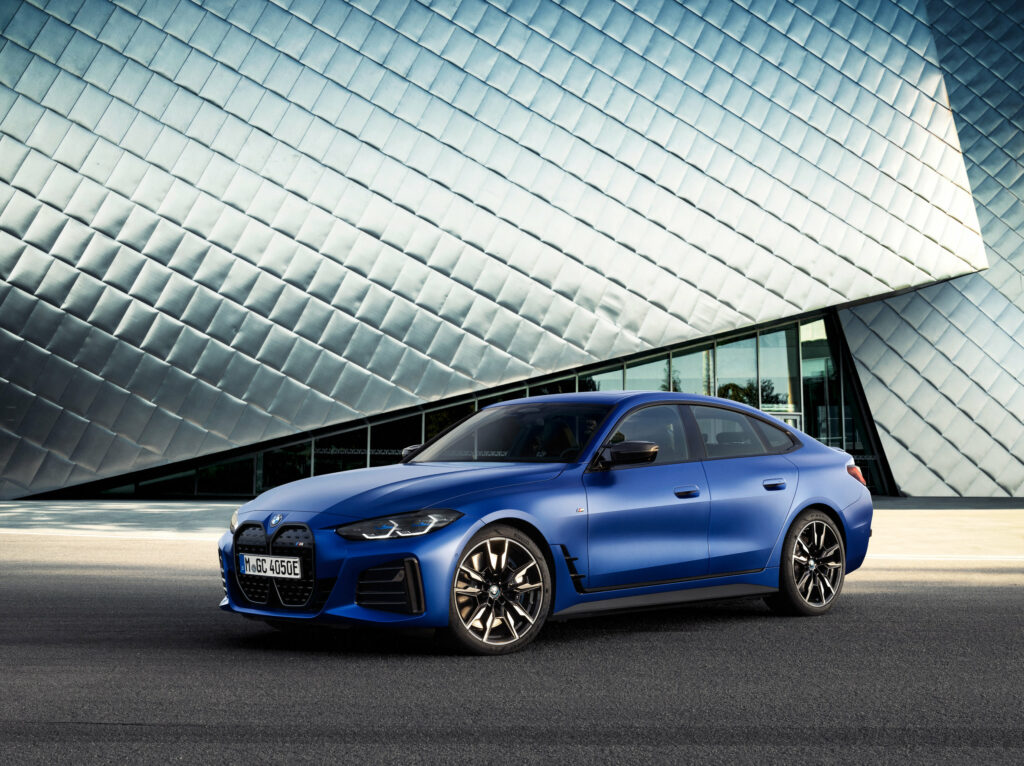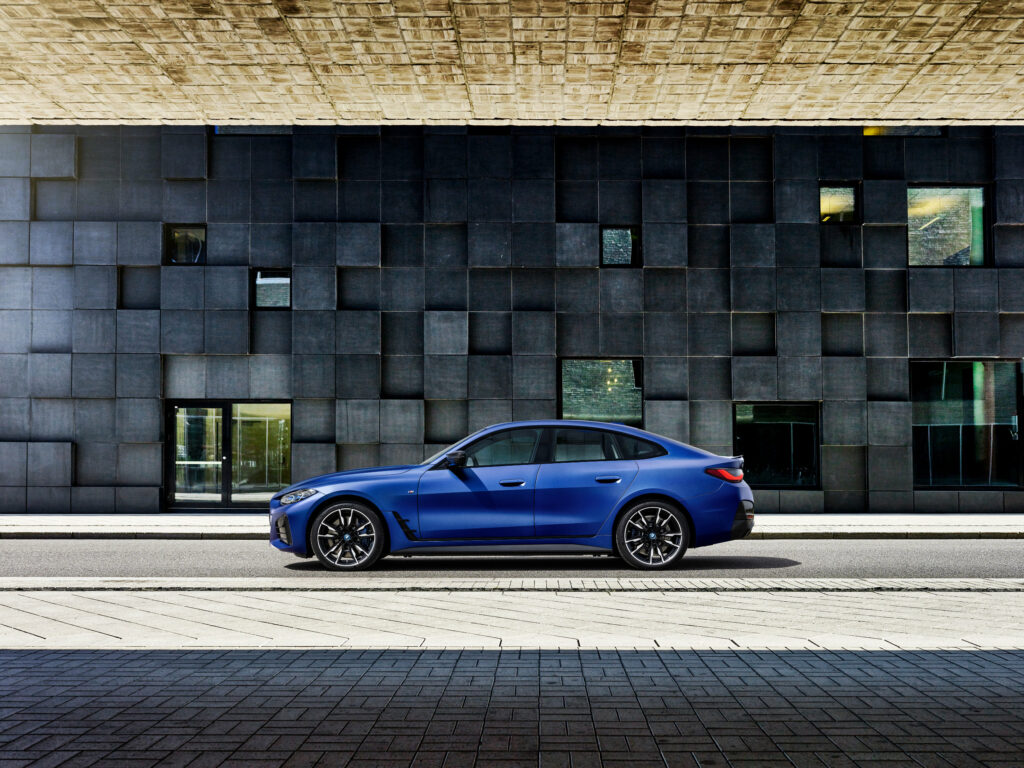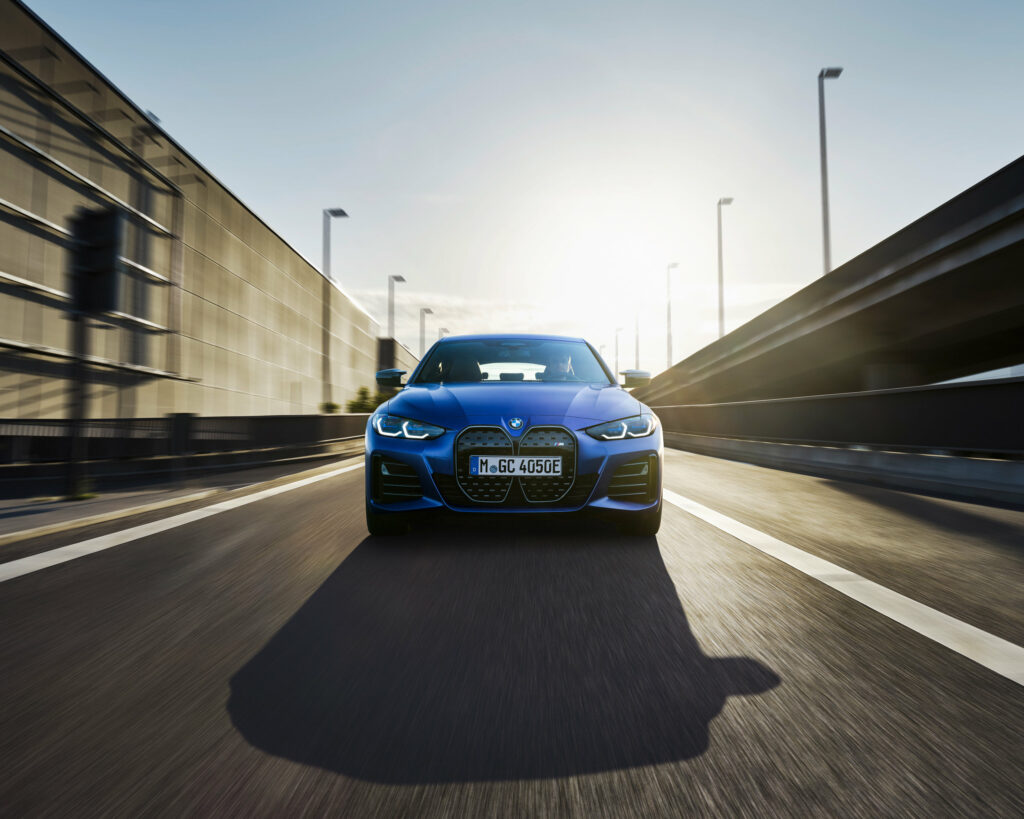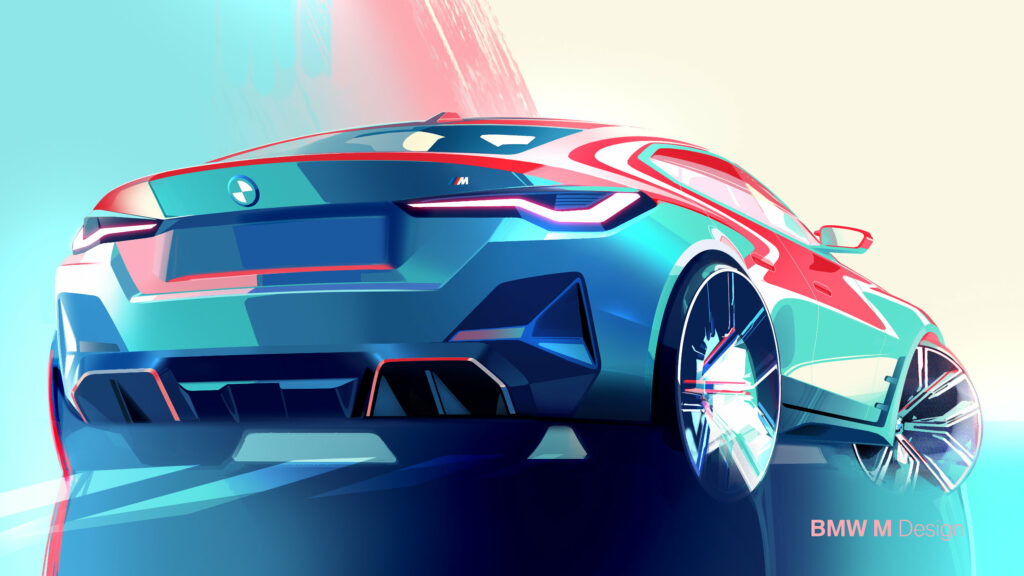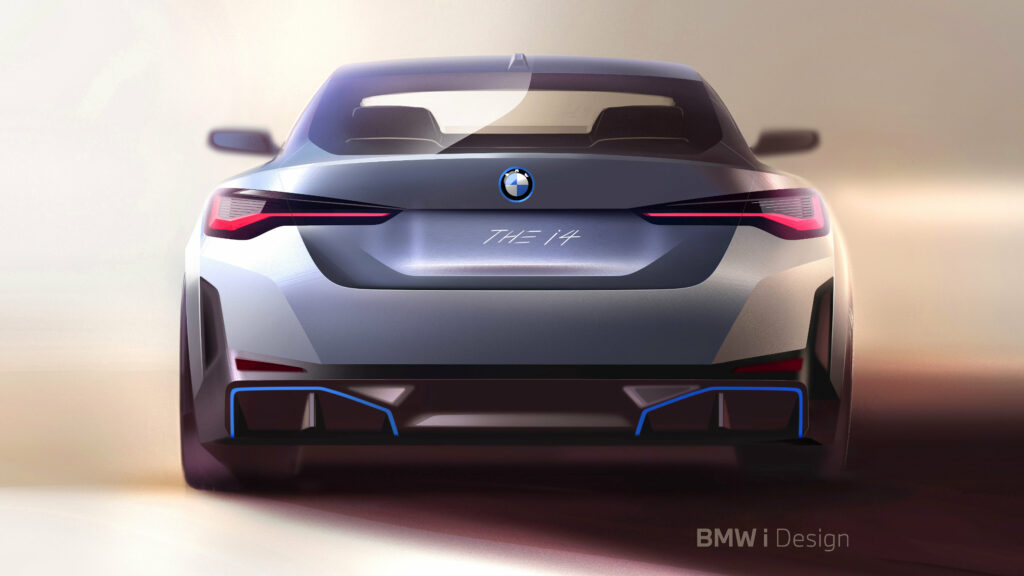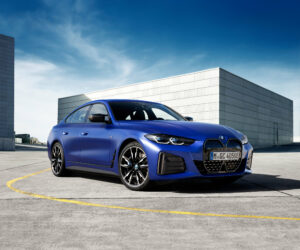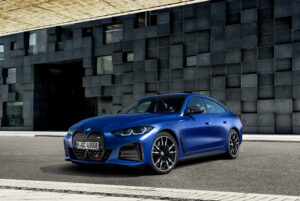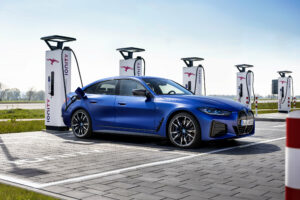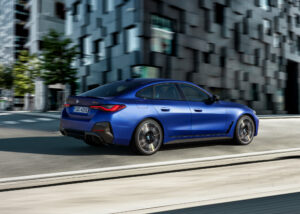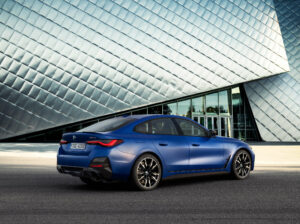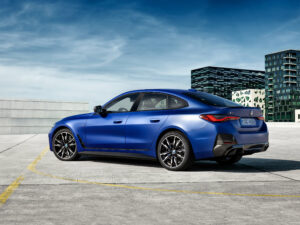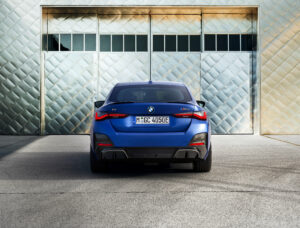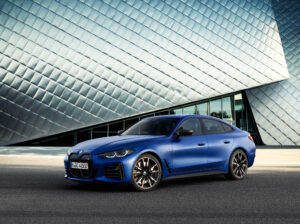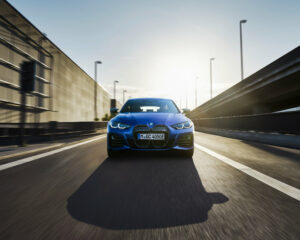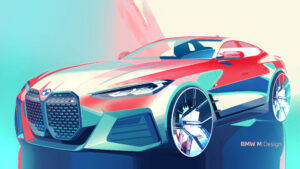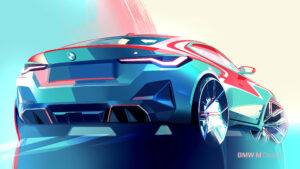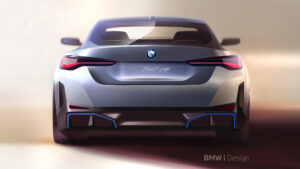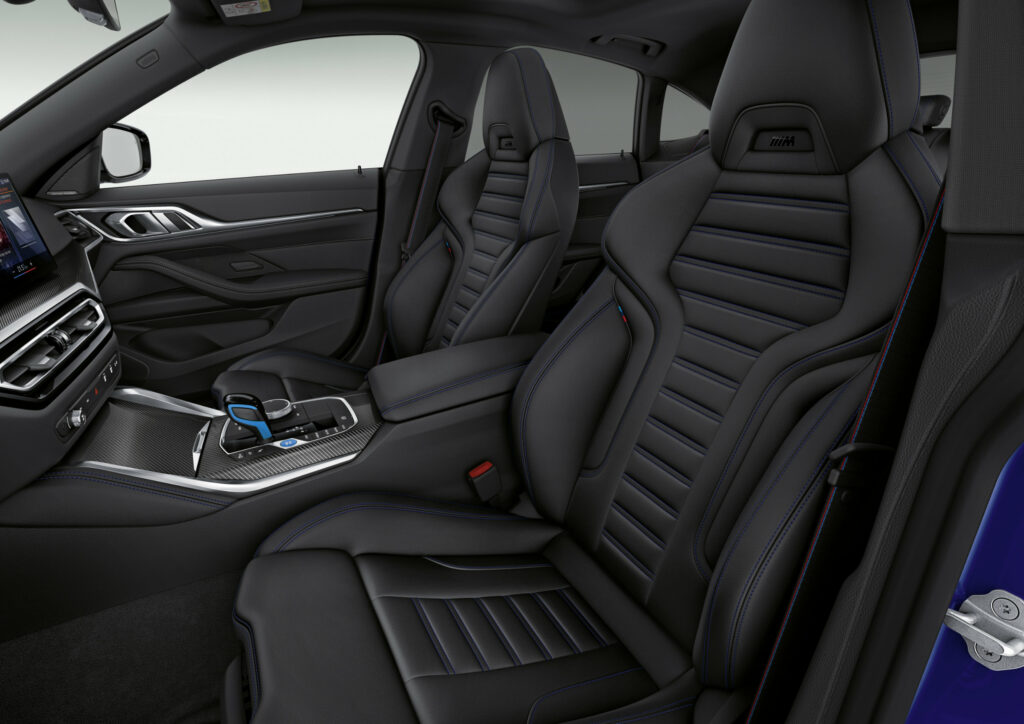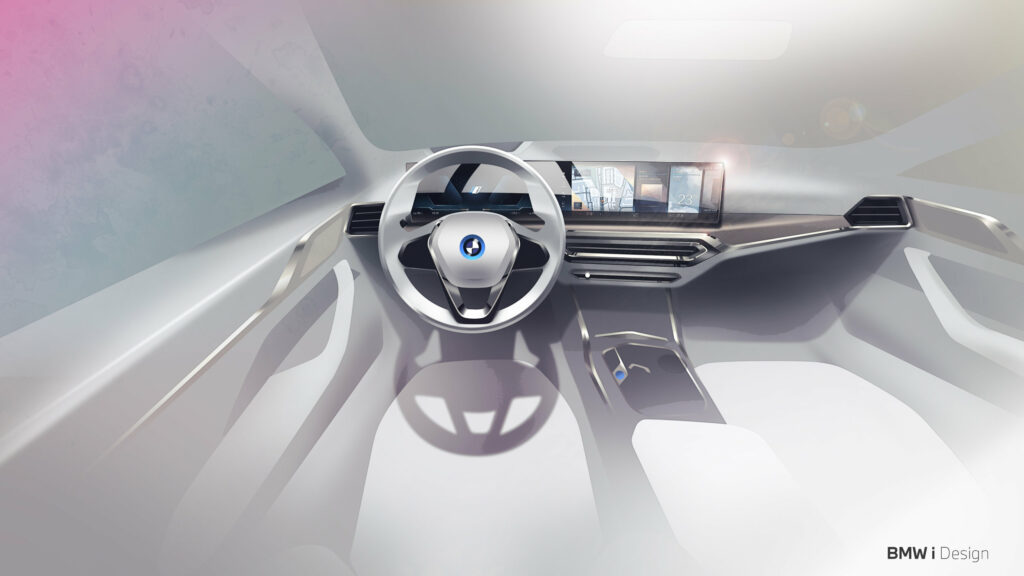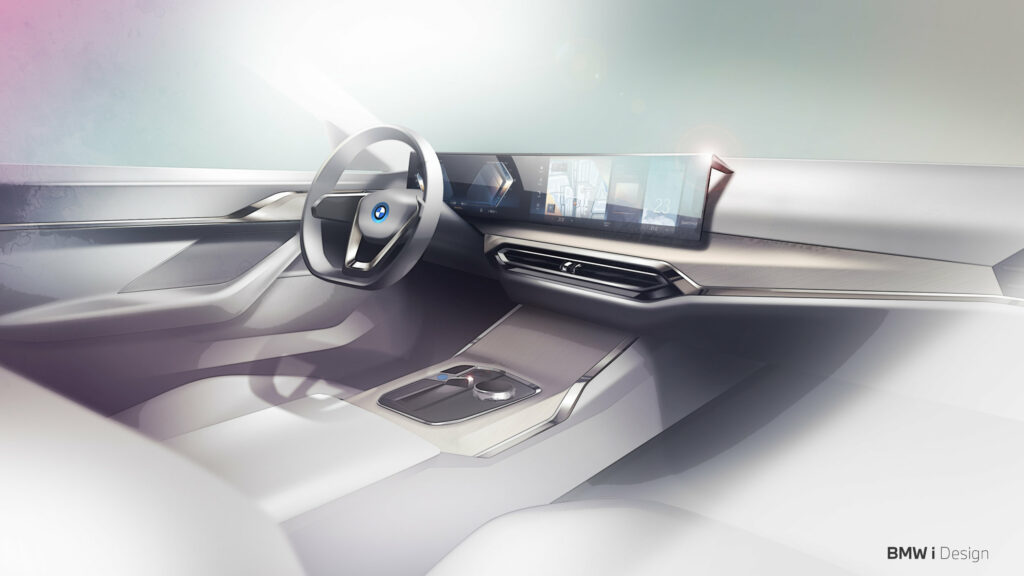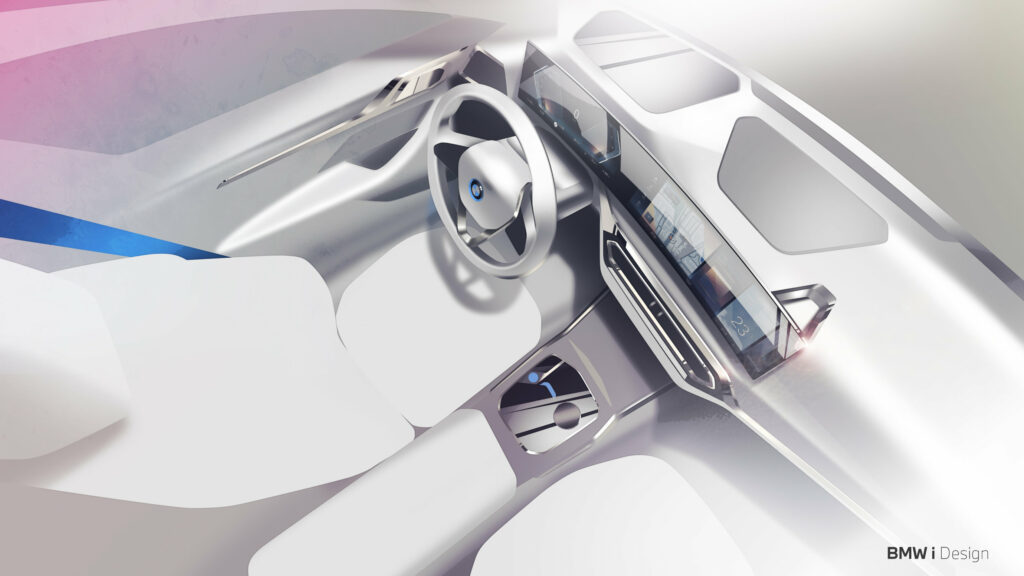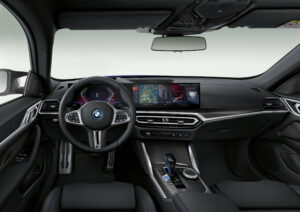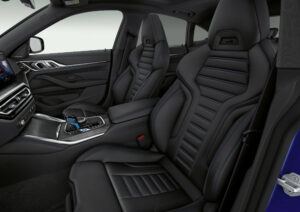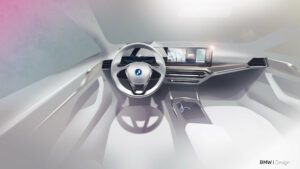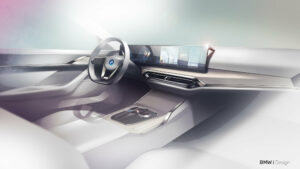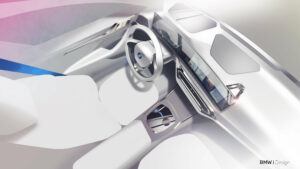BMW i4 M50
Two and a half months after the first demonstration, the BMW i4 electric car has been completely declassified. It is a five-door liftback with the size of the present “three”. Approximately the same will be the Gran Coupe of the usual, fourth series of the new generation, although, in fact, the unification of the i4 model with the hydrocarbon cars is not so high.
The BMW i4 liftback is 4,783 mm long, 1,852 mm wide, and 1,448 mm high, and it has 2,856 mm between the axles. The five-door has frameless doors, all-diode optics, and blind front “nostrils.” Aluminium is used extensively for the exterior body panels and recessed handles are used instead of the usual natural grip door handles. The Cd coefficient of aerodynamic resistance is 0.24, although some versions of the Three can have 0.23.
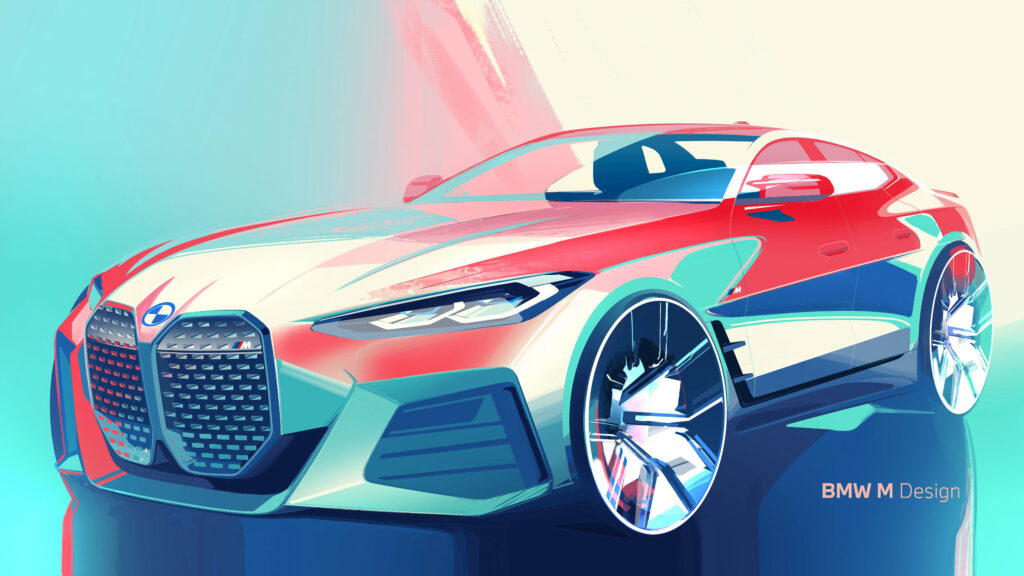
Like the BMW iX crossover, the i4 liftback is created on a new, purely electric platform, in which the traction battery housing is integrated into the body’s power structure. The design of i-four’s suspensions is unified with the usual three: McPherson struts in the front and five-lever behind. But the electric car already has air suspension in the base, and the track is widened by 26 mm in front and 13 mm behind. At the same time due to the low location of all electric components, the center of gravity became lower by 53 mm.
In the case of the crossover iX, designers abandoned the corporate interior style, the BMW i4 liftback interior still kept the characteristic shape of the front panel and even the center console. But in front of the driver is a set to the panel, on which under a single glass two screens are located. The instrument display has a diagonal of 12.3 inches, and the touchscreen of the media system – is 14.9 inches.
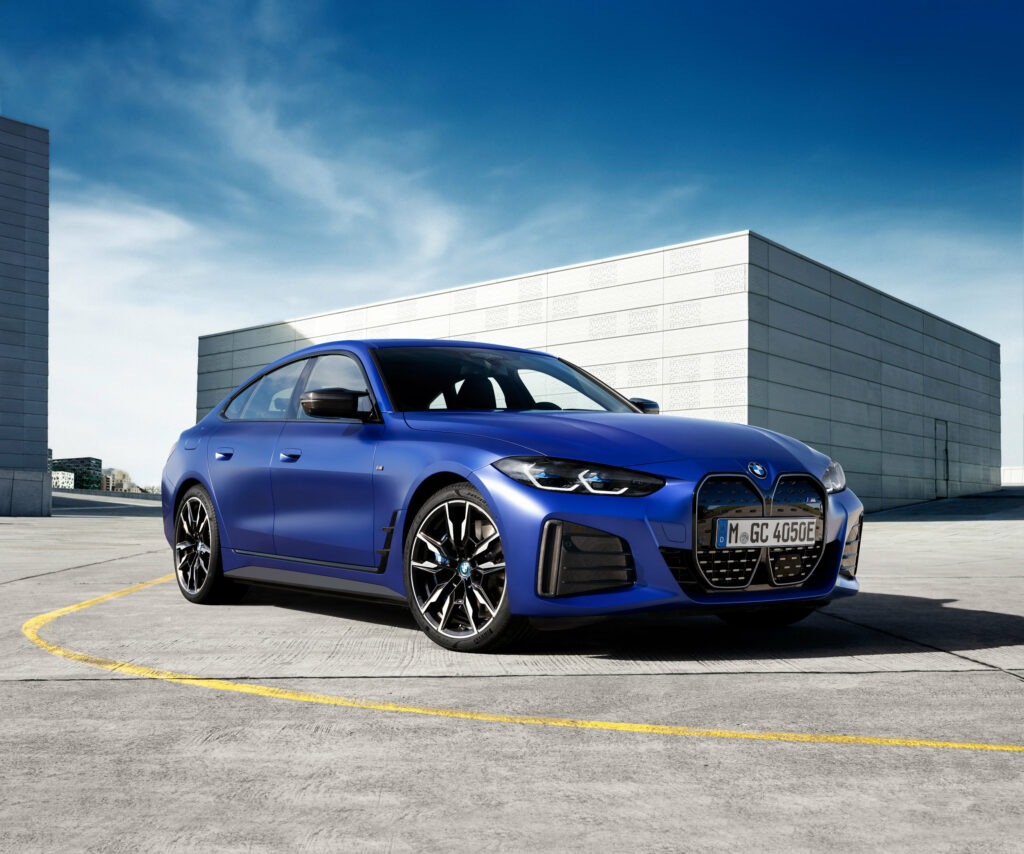
The iDrive system itself of the new, already eighth generation has expanded functionality to work with cloud services and increased adaptability to the habits and preferences of the owner. The separate remote control for the climate control was finally abandoned: now all management is in the bowels of the multimedia. Recycled materials are widely used in trimming. The rear sofa is divided into three parts in the proportion 40:20:40. The volume of the trunk – is from 470 to 1290 liters. And the liftback can pull a trailer weighing up to 1.6 tons.
The iX and i4 models have fifth-generation BMW electrics. These are compact modular electric motors, as well as a new traction battery, the specific energy capacity of which is 40% higher than that of the battery of the already not young BMW i3 model. The height of the cells is 110 mm. For now, only one version of the 83.9 kW∙h battery is designed for the BMW i4, of which 80.7 kW∙h is used. However, the operating voltage is only 400 volts, although Porsche and Audi already use an 800-volt system.

The BMW i4 driver can adjust the regeneration level all the way up to the most efficient one-pedal driving mode. The maximum regenerative power is 116 kW in the single-engine version and 195 kW in the twin-engine version. However, the liftback’s traditional mechanical brakes aren’t inferior to gasoline-powered cars either: ventilated discs are installed on all four wheels, with four-piston mechanisms at the front. The charging capacity from a three-phase AC outlet is 11 kW, and from a DC terminal – 200 kW, that is, it is possible to charge the battery from 10% to 80% in half an hour.
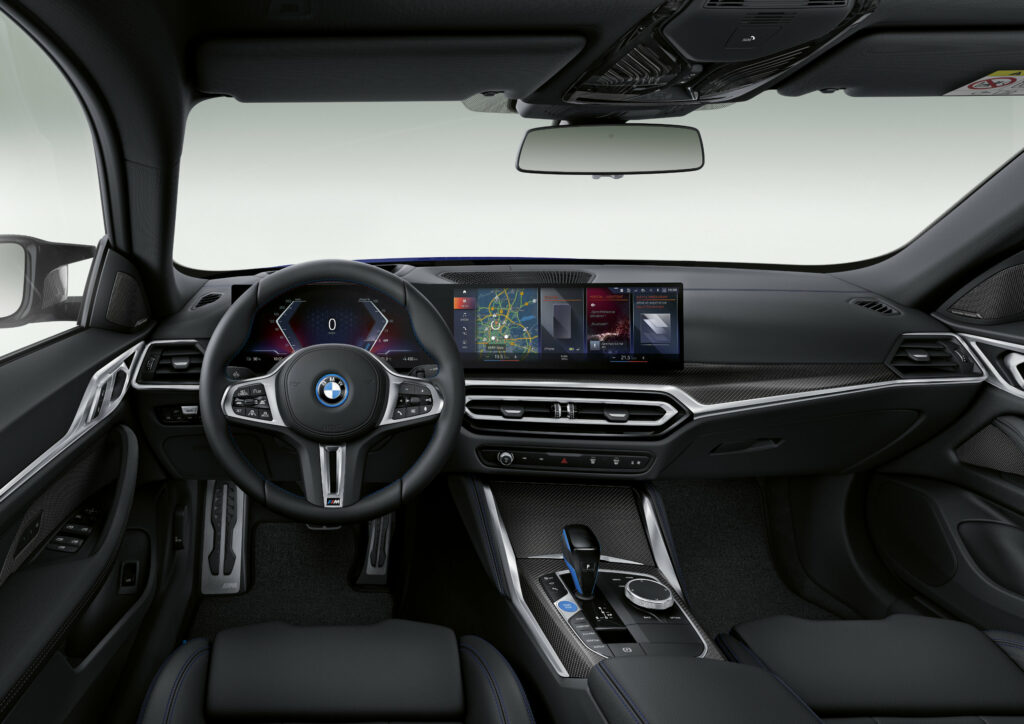
Naturally, the BMW i4 has a full set of electronic assistants, including second-level autopilot, i.e. adaptive cruise control with lane keeping and road sign reading functions. Besides, BMW electric cars of the new generation have a “soundtrack” unique for each modification. German composer Hans Zimmer, known for his film music, worked on the soundtrack, which is designed not so much for the driver as for the surrounding pedestrians.
| Performance | |
| Acceleration 0 – 100 km/h | 3.9 sec |
| Top Speed | 225 km/h |
| Electric Range | 450 km |
| Total Power | 400 kW (544 PS) |
| Total Torque | 795 Nm |
| Drive | AWD |
| Battery and Charging | |
| Battery Capacity | 83.9 kWh |
| Battery Useable | 80.7 kWh |
| Europe | |
| Charge Port | Type 2 |
| Port Location | Right Side – Rear |
| Charge Power | 11 kW AC |
| Charge Time (0->450 km) | 8h45m |
| Charge Speed | 52 km/h |
| Fastcharge Port | CCS |
| FC Port Location | Right Side – Rear |
| Fastcharge Power (max) | 200 kW DC |
| Fastcharge Time (45->360 km) | 30 min |
| Fastcharge Speed | 630 km/h |
| Energy Consumption EVDB Real Range | |
| Range * | 450 km |
| Vehicle Consumption * | 179 Wh/km |
| CO2 Emissions | 0 g/km |
| Vehicle Fuel Equivalent * | 2.0 l/100km |
| WLTP Ratings | |
| Range * | 510 km |
| Rated Consumption * | 190 Wh/km |
| Vehicle Consumption * | 158 Wh/km |
| CO2 Emissions | 0 g/km |
| Rated Fuel Equivalent * | 2.1 l/100km |
| Vehicle Fuel Equivalent * | 1.8 l/100km |
| Rated = official figures as published by manufacturer. Rated consumption and fuel equivalency figures include charging losses. | |
| Vehicle = calculated battery energy consumption used by the vehicle for propulsion and on-board systems. | |
| Real Energy Consumption Estimation between 125 – 245 Wh/km | |
| City – Cold Weather * | 188 Wh/km |
| Highway – Cold Weather * | 245 Wh/km |
| Combined – Cold Weather * | 212 Wh/km |
| City – Mild Weather * | 125 Wh/km |
| Highway – Mild Weather * | 190 Wh/km |
| Combined – Mild Weather * | 155 Wh/km |
|
Energy use for each trip will vary considerably depending on the driver and the conditions. Therefore, we have provided a range of estimates which can be useful in developing an understanding of the potential benefits of this technology. |
|
| Dimensions and Weight | |
| Length | 4783 mm |
| Width | 1852 mm |
| Width with mirrors | No Data |
| Height | 1448 mm |
| Wheelbase | 2856 mm |
| Weight Unladen (EU) | 2290 kg |
| Gross Vehicle Weight (GVWR) | 2735 kg |
| Max. Payload | 520 kg |
| Cargo Volume | 470 L |
| Cargo Volume Max | 1290 L |
| Cargo Volume Frunk | No Data |
| Roof Load | 75 kg |
| Tow Hitch Possible | Yes |
| Towing Weight Unbraked | 750 kg |
| Towing Weight Braked | 1600 kg |
| Vertical Load Max | 75 kg |
| Miscellaneous | |
| Seats | 5 people |
| Isofix | No Data |
| Turning Circle | 12.5 m |
| Platform | No Data |
| Car Body | Sedan |
| Segment | D – Large |
| Roof Rails | No |
| EV Dedicated Platform | Yes |
Home and Destination Charging (0 -> 100%)
A public charging station is required to use the highest possible charging rate. The EVSE/charging station’s charging capacity affects how long it takes to fully charge the battery. The table below shows all possible options for fully charging the BMW i4 M50.
In Europe, plugging an electric car into an outlet is often as easy as plugging it into a household outlet, but there are differences from country to country. The table below shows the different ways to charge the BMW i4 M50, but in some countries some chargers may not be available.
Type 2 (Mennekes – IEC 62196)

| Charging Point | Max. Power | Power | Time | Rate |
| Wall Plug (2.3 kW) | 230V / 1x10A | 2.3 kW | 41h30m | 11 km/h |
| 1-phase 16A (3.7 kW) | 230V / 1x16A | 3.7 kW | 25h45m | 17 km/h |
| 1-phase 32A (7.4 kW) | 230V / 1x32A | 7.4 kW | 13 hours | 35 km/h |
| 3-phase 16A (11 kW) | 400V / 3x16A | 11 kW | 8h45m | 51 km/h |
| 3-phase 32A (22 kW) | 400V / 3x16A | 11 kW | 8h45m | 51 km/h |
Fast Charging (10 -> 80%)
If you want to enjoy driving an electric car, one of the most important features to consider is the number of miles per hour the car can travel while charged. This is called the “range” of the car. All electric cars have a certain range, even if they are 100% charged. This is because they do not have an internal combustion engine to lean on if you need to drive a long distance.
Max. Power: The maximum power provided by the charging point
Avg. Power: The average power provided by the charging point during a session of 10% to 80%.
Time: the time it takes to charge from 10% to 80%
Speed: the average charging rate during the session of 10% to 80%
Combined Charging System (CCS Combo 2)
| Charging Point | Max. Power | Avg. Power | Time | Rate |
| CCS (50 kW DC) | 50 kW | 50 kW | 71 min | 260 km/h |
| CCS (100 kW DC) | 100 kW | 85 kW | 42 min | 450 km/h |
| CCS (150 kW DC) | 150 kW | 105 kW | 34 min | 550 km/h |
| CCS (175 kW DC) | 175 kW | 110 kW | 32 min | 590 km/h |
| CCS (350 kW DC) | 200 kW | 120 kW | 30 min | 630 km/h |
| Brand | BMW |
| Model | i4 M50 |
| Body Style | Sedan |
| Car Engine | Electric |
| Motor power | 400 |
| Maximum Torque, Nm | 795 |
| Battery Energy, kWh | 83.9 |
| Power reserve (NEDC/EPA/WLTP), km | - / - / 645 |
| Level Charging (230/400/DC), hours | - / - / 0.30 |
| Electrical Acceleration, 0-100 km/h (0-62.1 mph) in sec | 3.9 |
| Top Speed, km/h | 225 |
